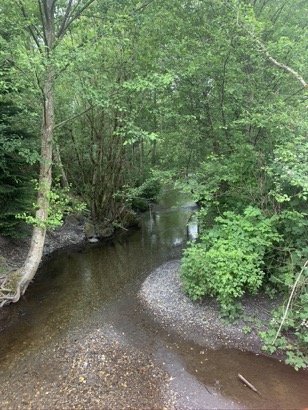An abandoned mental hospital
28/06/20 04:22
The twentieth century was a time of growing understanding of mental illness. As the century dawned, there was a sense of compassion for those who suffered from various types of mental illness, but little understanding of effective treatment. Those who were mentally ill were often isolated in hospitals that separated them from other people. The hospitals were often in rural areas and contact between patients and the rest of their families was limited. The treatments pursued were experimental as little was understood about brain function and how to treat those who suffered.
In Washington, Western State Hospital is the second oldest state-run institution. In its early days, many patients were referred to the hospital by the court system, with mental illness understood as a criminal problem rather than a general health problem. The involuntary admission and incarceration of patients required high levels of staff and secure facilities. Patients were often treated with sedation in order to control behavior. By the turn of the 20th Century, the facility was so crowded that there was a demand for additional hospitals. Eastern State Hospital was opened and later Northern State Hospital.
Established in 1909, Northern State Mental Hospital was a town unto itself. The planned facility took three years to build. Olmstead Brothers Architects, famous for New York City’s Central Park were employed to design the grounds and campus. The attempt was to develop a self-sustaining colony of mentally ill persons. The hospital site included patient and staff housing, a water reservoir, sewage system, lumber mill, quarry, steam plant, greenhouse, canning facilities, gymnasium, library, chapel, laundry, dining room, bakery, dairy, and 700-acre farm for growing vegetables and raising livestock. A cemetery was also included in the site plan.
By the 1950’s the hospital was home to 2,700 patients. As the understanding of mental illness increased, the public perception of its treatment shifted and the use of large controlled hospitals became less important as state run facilities. Those being treated in the large hospitals were moved to other programs including community-based treatment centers that allowed victims to live near their families. In 1976, the Washington Legislature cut off funding and closed Northern State Hospital. The extensive campus fell into disrepair, with some of the buildings, including the farm’s housing ward being torn down. Other buildings were allowed to deteriorate and remain on the campus, but with crumbling roofs and empty interiors. A small section of the original campus is used for a job corps center and drug rehabilitation facilities.
In the 1990’s planning for the use of the property was handed over to a citizen’s task force and eventually ownership was transferred to Skagit County, which has begun to develop the site as a recreation area. Hiking trails now are maintained within the site and allow visitors to tour the old dairy facilities, walk by the canning plant and other crumbling buildings, as well as through forested and open grasslands of the farm. An extensive disc golf course draws groups of serious players. A veterans picnic area has been built. The open spaces allow for ample room to walk while maintaining social distance.
The site, located at the northeastern edge of the town of Sedro-Woolley, is very close to where our son and his family live. They often go to the site to walk. The children have discovered paths leading through tall cedar trees and bridges over a small creek and enjoy the open spaces. Yesterday we walked there with our three grandchildren in the morning and returned in the afternoon for a walk at a brisker pace to maintain our exercise regimen.
As we walked, I thought of those who had been taken to the hospital for treatment. For many, it must have been a frightening experience. Many were taken from their families as children or teens and the transition to institutional living must have been very frightening. They would have been surrounded by those whose symptoms included severe mental illness and sometimes violent outbursts. They would have been cut off from family and friends. Locked doors and bars kept them within buildings except when they were allowed to go outside as part of work teams. They would be provided with work assignments that might be very different from the things they had known.

I don’t believe in ghosts and haunting and the description of the site as a ghost town doesn’t make any sense to my way of thinking. But I do believe that a place becomes infused with the stories of the lives that played out in that particular location. The remains of the once-extensive hospital facility and farm tell part of the story of the history of the treatment of mental illness in our society. Part of that story is a sad tale of draconian measures and incarceration of those who suffered. Their stories are tales of missed opportunities and lives whose potential was stifled through a lack of understanding.
The continuing development of what is now known as Northern State Recreation Area as a nature park and place for recreation for persons of all abilities is an appropriate use of land that once was dedicated to care for illnesses that were largely misunderstood and often not treated. As our society has moved away from custodial care to other treatments we have been blessed with the contributions of those who suffer from mental illness.
A walk through the campus tells part of the story of what once existed. It is a story that needs to continue to be told and a bit of our history that we must never repeat.
